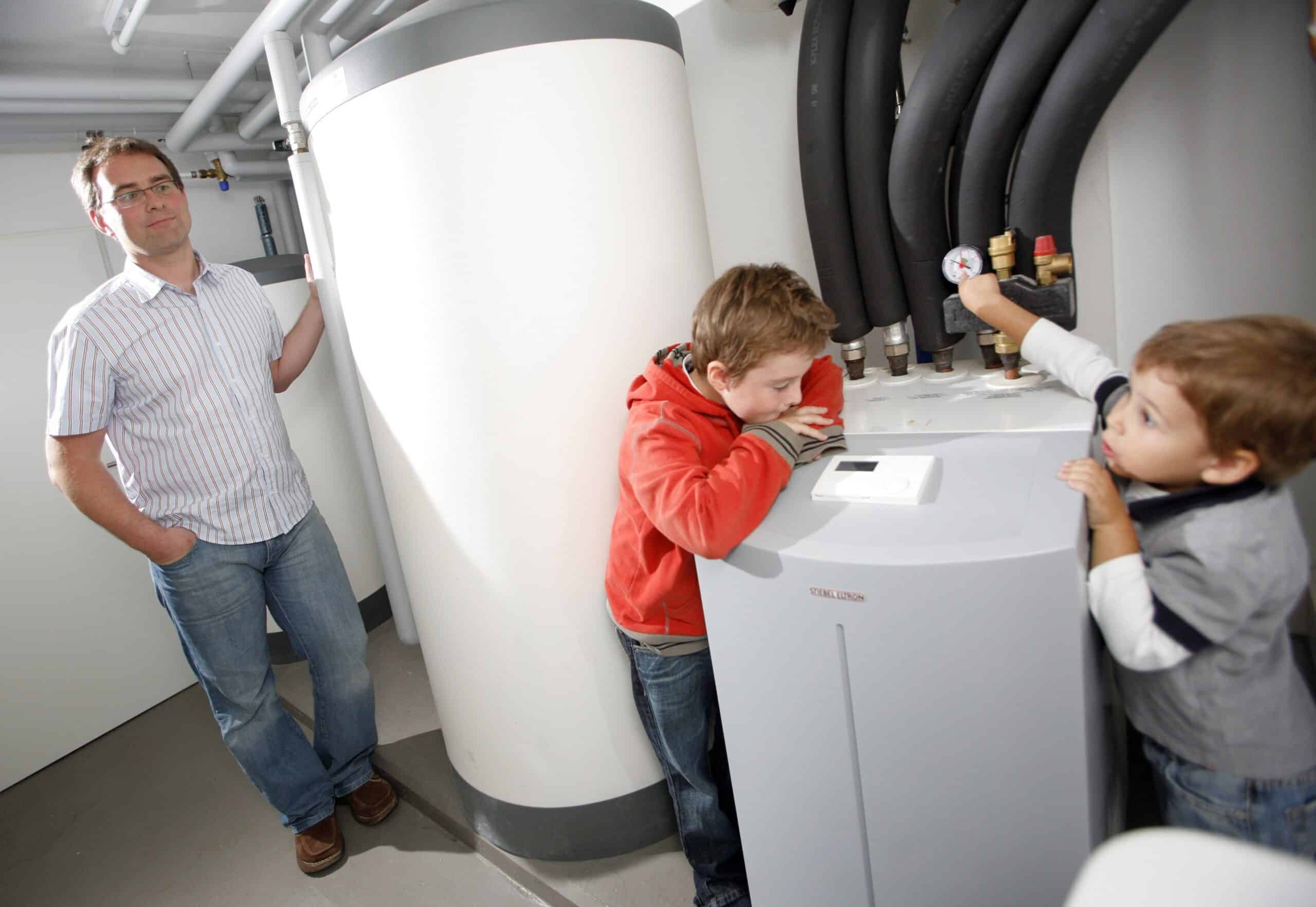
Time really is ticking now for heat pump installers. If the wheels of politics continue to turn as planned, then in 5 to 7 years much stricter standards will apply to the energy consumption of buildings. While definitive legislation is still in the works in the European Union, it is already clear that the construction industry is faced with an almost impossible chore. It certainly isn’t helping that Europe is also imposing new requirements on the sustainability of heat pumps at precisely this juncture.
2050. That’s the year when this task is supposed to be completed and Europe – if all goes well – will then be the first climate-neutral continent. We have 28 years left to get this massive undertaking done. And although the year 2050 may sound very far in the future, the deadline suddenly becomes frighteningly close when you consider the implications of the European Climate Law.
For example: if practically no more cars are allowed to run on fossil fuels by 2050, gasoline-driven cars will have to stop being sold 15 years earlier (roughly the normal life span of a new car). Which is why the European Commission is proposing that by 2035, a ban on the sale of new cars with combustion engines will be in place. That’s already just 13 years from now! The bill is currently the subject of negotiations between the member states and the European Parliament.
This tough climate requirement is revolutionizing the auto industry. Yet there is even more pressure on the construction industry. After all, all buildings in the European Union must be climate neutral by 2050, with the exception of any monuments where this is not practically possible.

Year of the changeover
Central heating units last much longer than cars. At least 20 years or thereabouts, according to the European Commission in its proposal for regulating the directive on energy performance in buildings. That means that – counting backwards from 2050 – by the end of this decade, the installation of new oil- or gas-fueled heating units should have come to an end.
The Commission wants a ban on public investment in fossil-fueled central heating units by 2027 and wants member states to have the option to ban the use of fossil fuels for heating. Member states are also in negotiations with the European Parliament on this proposal put forward by the Commission this fall.
The plan further stipulates that offices and public buildings with the F energy label (the lowest category on the scale that runs from A to F) must be renovated and meet the standards of the G label by 2027, and then the E label by 2030. Homes with the G label have slightly more time. These must be brought up to F by 2030 and E by 2033.
Buildings that cannot meet the standard will have to be ‘phased out’. The discussions in Brussels are heating up as to what that means exactly and whether such buildings can still be used beyond 2030, for one thing. It would seem that the European Parliament wants to implement stricter rules than the European member states.
Against this background, construction companies, and in particular, heating unit installers are confronted with an impossible task. No one knows how to renovate the tens of millions of buildings in Europe within such a short time. In a country like the Netherlands, this task is still relatively manageable: A typical Dutch residential neighbourhood is made up of the same type of housing, some of which have been built several hundred times over, with only slight variations in layout. If you can figure out how to make one of those houses energy efficient, then you will immediately know how to make the whole neighborhood energy efficient. But the Netherlands is a bit of an exception. It is far more common in Europe for every free-standing house to be unique in its design. And that entails: millions of custom solutions for millions of homes.

One Europe, one standard
In order to restore order to this chaotic state of affairs, the European Commission proposes that at least one standard should then be adopted across the European Union. Which means that the criteria for which building falls into what category will become the same everywhere.
Much is riding on the highest category A: zero emission buildings. New buildings will soon always have to meet the A label requirements. This means that new buildings will have to generate practically all the energy that they need themselves. Any small amount of energy that comes from outside of them (in the form of heat or electricity) will also have to come from renewable sources.
Having one European standard at least means that the construction industry understands what is expected of them, rather than creating a hotchpotch of different interpretations about what constitutes zero-emissions. Also, a uniform definition prevents member states from fiddling with the rules.
That uniform definition, by the way, is coming under pressure in the political negotiations now underway in Brussels. That was what Stefan Moser, the official at the European Commission tasked with the proposal, told a Brussels conference on sustainable energy last week.
Concerns have been raised, especially in member states, about a definition that is too strict and could hinder the ability to provide customized solutions. We will only know the outcome of the political battle in a few months, but Moser made it clear in Brussels that although flexibility is important, care must be taken not to undermine the idea of one universally applicable standard.

More time is needed
During that same conference, it became apparent that the main obstacle to meeting the goals is a long way from being resolved: the question of who should carry out all that work.
The European trade association of heat pump installers (AREA) is extremely concerned. In order to meet the targets and replace the countless gas-powered central heating systems with heat pumps, the number of installers needs to be doubled. Above all, the fact that installing heat pumps is much more complicated (and consequently takes more time) than a traditional boiler will hamper rapid progress.
The fact that the European Union is imposing stricter requirements on heat pumps just when so many heat pumps are needed is not helpful. To ensure that the machines that use heat drawn from the air to heat buildings are themselves more climate-friendly, they will have to start running on different gases than they do now.
At present, heat pumps contain what are known as fluorinated gases (F-gases). These are comparatively safe, but because they are greenhouse gases, the European Union wants to curtail their use. From a technical point of view, it is possible to use other gases such as ammonia or propane. These are less harmful to the climate, but are frequently toxic or combustible. Dealing with those substances imposes new demands on installers.
“Designing, installing and maintaining systems that are filled with these types of gases calls for a totally different approach. One that is much more focused on ensuring safety,” says Coen van de Sande on behalf of the AREA European heat pump installers.
A combination of staff shortages and the urgent need to train people to work with other propellants has prompted him to issue a warning to politicians: The deadlines that the EU imposes on industry need to be realistic.
“We need time to train personnel. We definitely will need until 2028 to be prepared to supply the numbers that are needed,” Van de Sande states in conclusion.

